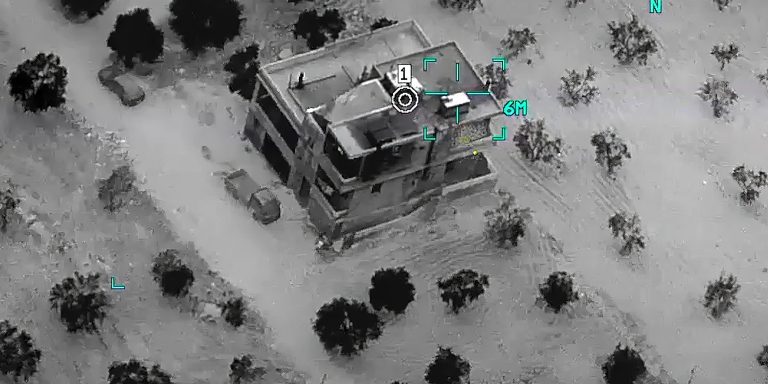INTELBRIEF
February 4, 2022
IntelBrief: ISIS Leader Al-Qurayshi Killed in Operation by U.S. Forces in Syria

Bottom Line Up Front
- Yesterday morning, U.S. President Joseph Biden announced that U.S. special forces targeted Islamic State (ISIS) leader Abu Ibrahim al-Hashimi al-Qurayshi in a raid in Syria’s Idlib province, resulting in his death.
- The timing of the raid is important because al-Qurayshi’s death comes as the group was mobilizing for a larger offensive in Syria and Iraq, signalled by the recent ISIS prison break in Hasakah
- One major question is whether or how his death will impact ISIS’s global operations, particularly its branches in South Asia and sub-Saharan Africa.
- Targeting al-Qurayshi is proof that the Biden administration feels pressure to demonstrate resolve in Syria, signaling to allies that the U.S. has learned from its disastrous withdrawal from Afghanistan.
Yesterday morning, U.S. President Joseph Biden announced that U.S. special forces conducted a raid targeting Islamic State (ISIS) leader Abu Ibrahim al-Hashimi al-Qurayshi in Syria’s Idlib province that resulted in his death. Al-Qurayshi, an Iraqi of Turkmen origin, was believed to be in his mid-40s. He had led ISIS since the death of its longtime leader Abu Bakr al-Baghdadi in October 2019, which occurred in a scenario strikingly similar to yesterday’s events. In both incidents, which occurred in Idlib province, the terrorist leaders detonated explosives to kill themselves, along with their families, rather than be taken alive by U.S. forces. Al-Qurayshi was allegedly the mastermind behind the genocidal campaign against Yazidis and the institutionalization of sexual slavery as a means to diminish and destroy the community. Yesterday’s operation involved 50 U.S. special operations forces, with no American fatalities; however, at least 13 people, including 10 women and children, were reportedly killed during the raid when al-Quraishi detonated explosives.
While nowhere near as prominent as his predecessor, Abu Bakr al-Baghdadi, al-Qurayshi still commanded significant respect within jihadi circles and was known as a highly intelligent strategic thinker. The timing of the raid is crucial because al-Qurayshi's death comes as ISIS was gearing up for a larger offensive across Syria and Iraq, signalled by the recent prison break in Hasakah. Al-Qurayshi was very focused on operations security in order to avoid being captured or killed; however, the tradeoff therein meant he was a ghost, not visible and active in a manner likely to inspire jihadist recruits.
The next ISIS leader could be someone relatively unknown, which will present the U.S. and its allies with a challenge in terms of intelligence collection and network mapping. Yet, this scenario would also pose a challenge for ISIS, particularly if the next leader is not someone with a reputation on par with previous jihadist leaders. Whoever comes next to lead ISIS may not have the same level of credentials, which could lead to a generational rift within the group or create fissures and splintering between internal factions competing for resources and power. From the start it was clear that al-Qurayshi used his name to make strong linkages to religious pedigree through associations of lineage with the Qureysh but that may not be possible to replicate with subsequent leaders.
Some reporting suggests that the U.S. was aware of al-Qurayshi’s location for weeks, since early December. The operation occurred close to the Turkish border and included Apache gunships and drones. The recent prison break may have been the ultimate impetus for U.S. action, or the raid may have been the logical endpoint of weeks of planning for a sophisticated operation. That al-Qurayshi was located in Idlib province—home to adversarial jihadist groups such as Hayat Tahir-al Sham and the al-Qaeda-linked Hurras al-Din—is a dynamic that has puzzled counterterrorism analysts.
One major question and point of speculation is whether or how al-Qurayshi’s death will impact ISIS’s global operations, particularly its branches in South Asia and sub-Saharan Africa. In the past, when the franchise groups and provinces of transnational terrorist organizations like al-Qaeda and ISIS have been unable to communicate with core leadership for extended periods, the result has been that these regional affiliates focus more on local issues, eschewing the global objectives often pushed by top leadership.
Targeting al-Qurayshi is proof that the Biden administration feels pressure to demonstrate resolve in Syria in order to show others in the region that the U.S. will not be withdrawing anytime soon. Concerns had surfaced that, after the chaotic U.S. withdrawal from Afghanistan, Syria could be next. This operation indicates that will not be the case, with President Biden remarking, “Last night’s operation took a major terrorist leader off the battlefield, and it sent a strong message to terrorists around the world: We will come after you and find you.” Yet, Biden will be the fourth consecutive U.S. President to claim credit for eliminating a major jihadist leader, stretching back to George W. Bush’s presidency and the killing of Abu Musab al-Zarqawi in 2006. The Jordanian militant was the leader of al-Qaeda in Iraq (AQI), which over time morphed into present-day ISIS. Barack Obama ordered the raid that killed Osama bin Laden in Abbottabad, Pakistan in 2011, and Donald Trump claimed credit for killing Baghdadi in 2019. Still, none of these so-called decapitation strikes have succeeded in dealing a lethal blow to either al-Qaeda or ISIS. While survivors and victims of al-Quraiyshi’s brutality will no doubt feel some relief at his demise, it remains critical to ensure support to victims, including the Yazidi community, while enhancing accountability measures and international efforts to bring terrorists to justice in a court of law while also developing appropriate rehabilitation and reintegration efforts for those deemed ready.